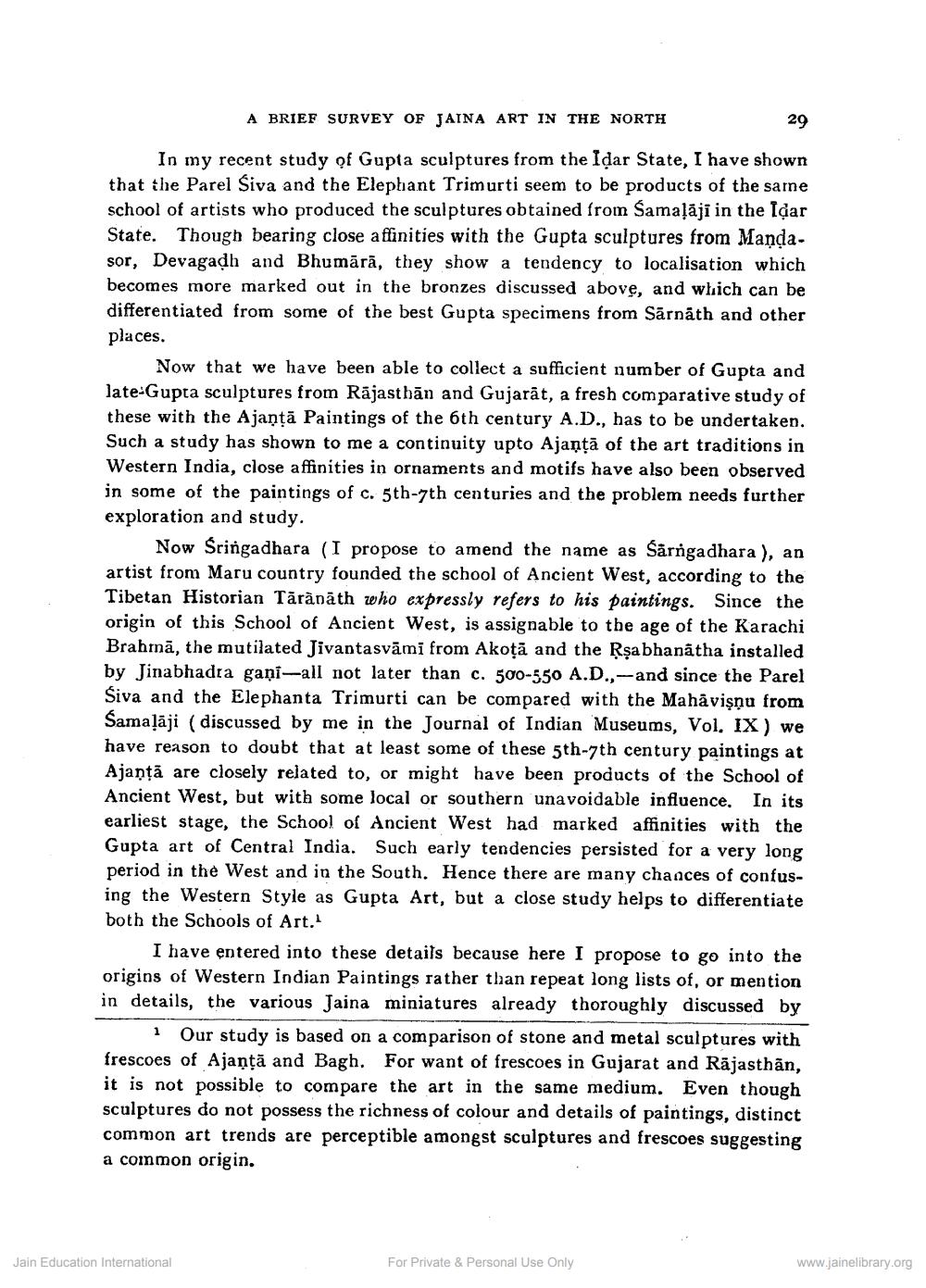________________
A BRIEF SURVEY OF JAINA ART IN THE NORTH
29
In my recent study of Gupta sculptures from the Idar State, I have shown that the Parel Siva and the Elephant Trimurti seem to be products of the same school of artists who produced the sculptures obtained from Samaļāji in the dar State. Though bearing close affinities with the Gupta sculptures from Mandasor, Devagadh and Bhumārā, they show a tendency to localisation which becomes more marked out in the bronzes discussed above, and which can be differentiated from some of the best Gupta specimens from Sārnāth and other places.
Now that we have been able to collect a sufficient number of Gupta and late-Gupta sculptures from Rājasthān and Gujarāt, a fresh comparative study of these with the Ajanță Paintings of the 6th century A.D., has to be undertaken. Such a study has shown to me a continuity upto Ajanţă of the art traditions in Western India, close affinities in ornaments and motifs have also been observed in some of the paintings of c. 5th-7th centuries and the problem needs further exploration and study.
Now Sringadhara (I propose to amend the name as Sãrngadhara ), an artist from Maru country founded the school of Ancient West, according to the Tibetan Historian Tārādāth who expressly refers to his paintings. Since the origin of this School of Ancient West, is assignable to the age of the Karachi Brahrnā, the mutilated Jivantasvāmī from Akoțā and the Rşabhanātha installed by Jinabhadra gaņi-all not later than c. 500-550 A.D.,--and since the Parel Siva and the Elephanta Trimurti can be compared with the Mahavişņu from Samaļāji ( discussed by me in the Journal of Indian Museums, Vol. IX) we have reason to doubt that at least some of these 5th-7th century paintings at Ajanță are closely related to, or might have been products of the School of Ancient West, but with some local or southern unavoidable influence. In its earliest stage, the School of Ancient West had marked affinities with the Gupta art of Central India. Such early tendencies persisted for a very long period in the West and in the South. Hence there are many chances of confusing the Western Style as Gupta Art, but a close study helps to differentiate both the Schools of Art.
I have entered into these details because here I propose to go into the origins of Western Indian Paintings rather than repeat long lists of, or mention in details, the various Jaina miniatures already thoroughly discussed by
1 Our study is based on a comparison of stone and metal sculptures with frescoes of Ajanţă and Bagh. For want of frescoes in Gujarat and Rājasthān, it is not possible to compare the art in the same medium. Even though sculptures do not possess the richness of colour and details of paintings, distinct common art trends are perceptible amongst sculptures and frescoes suggesting a common origin.
Jain Education International
For Private & Personal Use Only
www.jainelibrary.org




